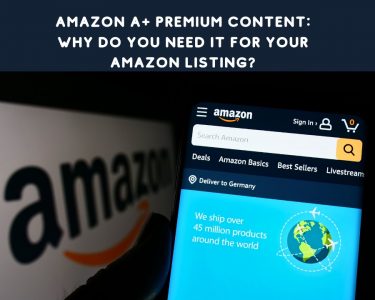You spend days at times months in the product hunting phase, select a supplier, negotiate, place an order and then wait for a month for your inventory to reach the warehouse in the USA. Is your work done? The answer is no, you’ve just completed the half track. Now you have to work on your Go To Market (GTM) strategy, meaning you need to make concerted efforts to put your product in front of prospective customers. There are several factors that come into play when we talk about GTM like Product photography, Product listing, Running PPC campaigns, Facebook advertising, connecting with Youtube/Instagram followers, etc.
Before we go into the details, it’s important to know that the A9 Amazon Ranking Algorithm works around a balanced product title, description, and the features.
Recipe for Self Destruction
All experienced sellers will tell you the significance of Product listing in your GTM strategy. A buyer spends most of his/her time in making a decision on the product page on the listing. Tons and tons of products are out there with amazing quality & specifications but suffer losses due to the poor listing. They have done everything correctly but their GTM strategy is appalling. Writing product title, features and description have become daunting for the majority, it is often overlooked and not many put efforts in understanding the mechanics. Successful sellers, however, pay special attention to this part as they know this is where the magic happens.
Since AMZ One Step specializes in this area for our global clientele, we are excited to share this knowledge with our readers to make your product listing fully optimized. The aim is to create an amazing Amazon listing where customers can reach to you organically. You need to customize your GTM strategy as it will vary from product to product, category to category, with different ages and gender preferences. For example, Sports products are generally not purchased by people above 60 years of age. While Health Improvement products and Safety Equipment are not of interest to the younger generation. Therefore, your GTM strategy for both will be different.
Some General Rules While Writing Balanced Product Title, Features & Descriptions
English as a First Language. You should pay special attention here if you are an Amazon seller from a non-English speaking country. You need to be aware that your buyers are English speaking, they are going to be your readers first and then your customers. People will quickly form a degrading opinion of your company if you are writing in phrases with few words and not explaining your products.
Target Audience. Who are you writing the product listing for? Who will be buying your product? You need to be clear about your target audience to gather and write content accordingly.
Style of Writing. Some people get carried away and write extremely non-serious titles and features just to show high energy or that they are funny. For example, if you are selling luxury products you should not be using humor in your text at all. You need to use fancy and sophisticated language to talk to your customers who have a different mindset.
Product Research. Research your product from every source. If you are working on a niche then you can go back to your supplier or manufacturer to get maximum information. The aim should be to satisfy all the queries of a buyer and remove all the hesitations that they might have. Keep an eye on competitor’s product information and see if you are moving in the right direction generally. DO NOT COPY, look at their listing critically, see where did they go wrong and ask yourself how YOU would have done things differently. Use Youtube if you are working on special products and are unable to develop an understanding of them.
Pain Points. Read reviews and understand the issues raised by previous consumers. Address the issue at hand and send a message across to solving the problem of your customers to build their trust levels and gain credibility.
Shop on Amazon Yourself. See what appealed you the most, the information or the way it was written. Imagine the experience yourself of using the product and write what comes naturally.
Write as a Buyer, not a Seller. Change your seller mindset for a while and put yourself in the buyer’s shoes. This will change the tone, your language altogether and will inject the required level of empathy as you will see yourself what will convince you to purchase online.
Interfaces. See how your titles, features & description appear on a tablet, phone, and laptop. 60% of shoppers are buying on mobile devices so you need to pay special attention as to how your product gets shown.
Avoid Sky High Claims. Do not include ‘#1 Selling’, ‘Best’ or ‘Hot Selling Item’ if it is an incorrect claim. Exaggeration might get you caught and you might get penalized by customers when you fail to keep up the expectation levels. Give them hope, don’t sell lies.
Keyword Research Tools. This is absolutely important. You need to use authentic and accurate keyword research tools like AMZ Wordspy to make a list of the most relevant keywords. They need to be smartly incorporated into your titles, features, description and backend keywords within your seller central.
Attention to Detail. Judgment calls will be made almost immediately you make obvious mistakes in text like grammar or in spellings. Buyers quickly form an opinion that the seller is either not established or is inexperienced, resultantly you lose trust.
Writing A Balanced Product Title
Like in Google SEO, a balanced product title is more than important mainly because it directly effects the CTR of a product. And this CTR is what A9 Amazon Ranking Algorithm is all about.
1st Impression is the Last Impression. So this will be your very first impression from the text point of view but 2nd after product images. A customer has typed in the keywords and you have successfully managed to pull him/her to your page, now you just need to convince them that this was the product they were looking for.
Total Characters. You have 200 characters (with spaces) to write an introductory title of your product/brand. The first 80 are extremely important as they are picked up by the Amazon’s algorithm so get your main keywords ready. The trick is to divide the 200 characters into segments and treat them as small titles.
Keywords. A balanced product title needs to be rich with keywords and understandable at the same time. People who do this regularly understand the pain of striking that balance. There needs to be a proper sequence and a flow in the title which gives a compact snapshot of your product.
Quantity. If you have packaged or bundled up your product then you need to write quantity/number of items in the title to lure the customer in buying your offering.
Category Style Guide. It will be helpful for you to check the category style guide for your product as Amazon shows some flexibility in each of them.
Non-Serious Titles. Writing balanced product title is extremely significant; people either make it too complicated or take them extremely casually by putting 2 or 3 words in them. Please do not write vague or non-meaningful statements. Be specific, every word is precious and should yield information to convince your buyer.
Elaborating Product Features In Accordance With A9
Length. Maximum 5 bullet point features are allowed and you should utilize them. It varies in different categories but generally, you need to keep it between 150-200 characters roughly 75-85 words.
Be Specific. Write benefits not general descriptions or irrelevant information about your company or the product which will in no way benefit the end-user. You need to be logical while writing strong and unique features of your product.
A Solution. As shared earlier as well, what will the customers achieve after using your product? Is it really the product that will solve their problems? How will it solve their problems or make their lives better? The onus is on you to make them understand that your product is the ‘messiah’ they were looking for.
Universal Selling Proposition (USP). You need to dedicate at least one feature for your USP. Why do you stand out from the rest and why should customers buy your product when they have an ample variety of products and suppliers available? You need to talk about how you have improved the quality levels and how does your offering differentiate from the rest? Some people get carried away here and started pointing fingers towards their competitors. The trick is to be diplomatic and not talk about competitors negatively as it is against Amazon’s TOS.
Sequence. Your first 3 bullet points features need to be spot on and crisp with all the relevant information. It’s like the product placement concept in Marketing, you need to place your best foot forward and display what’s important to customers. You can shuffle the points from time to time to experiment. Maybe a feature that YOU feel is convincing might not be convincing for others after all.
Check Reviews. Identify repetitive complaints & write about them from your competitor listing. You can say subtly that ‘after receiving a number of complaints related to………., we have improved the quality’. This will show that your company cares about its customers, that you are responsive and continually improving products.
Lifestyle Uses. You can also dedicate at least one feature developing an association with real life.
Research. Even though we have mentioned this earlier but we will still reiterate. Read as much as you can about the product and while reading makes notes about repetitive features or points that keep on popping up on different sources like on Alibaba, Supplier’s website or competitor pages. Make a list of those points, select the ones that you feel will be most attractive to the reader in your view and will engage them to read more about your product.
Money-Back Guarantee. Always mention a money-back guarantee as a separate feature especially when you are doing Amazon FBA. Most of the Amazon customers are already aware that they can return and get their money back from Amazon. In any case, so there is no point in hiding or not talking about it. Make them feel secure by bringing it up yourself.
Customer Service. You need to give comfort to your buyers that you are not just making ‘one’ sale but will be there for them after sales as well. So, you need to write that explicitly that you have amazing customer service.
Add Attraction. You can go to emojipedia.com and add a colorful emoji at the start of each feature to attract the attention of your customers. People with an aesthetic sense will be drawn into your listing for sure as it will be a pleasant read.
Synonyms. When you extract the keyword list from the keyword research tool you use, you need to see if there are any alternate spellings that have been used by people. For example, if you have a grey color product, you have to use ‘gray’ as well. At times you also have to use incorrect spellings where appropriate.
Material Used. What is the product made of? Many times even experienced sellers miss out on this information which is absolutely integral. People are finicky about the product that they are planning to purchase and require as much detail as possible pertaining to its construction and substances/ingredients used.
Writing Effective Product Descriptions
Company Information. Include some company details to show that there is a formal company behind this product to make a reliable impression on the customer. This is most often neglected but plays a big role in establishing a reliable image on customers.
Block of Text. You don’t want a massive block of text or a long boring paragraph that your customer will feel irritated reading.
Convert to HTML. Type your product description in MS Word with the best of your formatting abilities After bolding, italicizing, underlining and paragraphing, go to www.wordhtml.com and copy-paste the text. You can switch the tabs to copy the same text in HTML format. There you go! Your text is no more in a solid block form.
Incorporate Keywords Smartly. There are times you have picked up keywords from different sources and you just don’t know where to incorporate them. A Balanced Product Title, features and back-end keywords have some limitations in terms of word limit and number of characters. Plus you cannot put all the desired words in them. You just have to put in the keyword once, that’s enough for Amazon’s algorithm as it checks keywords anywhere in the listing.
Traffic. Keywords do attract traffic but don’t ensure conversion. The key is not to overwhelm but to provide sufficient information to convince them.
Experiment. Keep on testing and try different combinations/approaches until you reach success.
A balanced product title, an effective product description, and a versatile description of features can do wonders for you product rankings in Amazon.
Need help with Amazon Listing? Check out the AMZ One Step.




